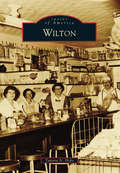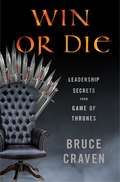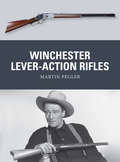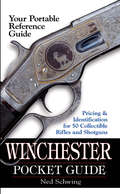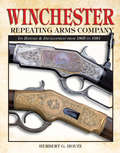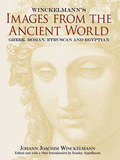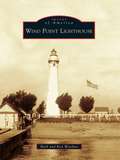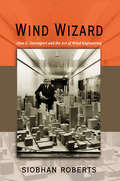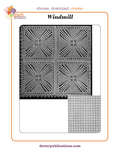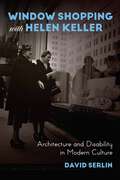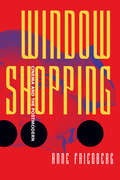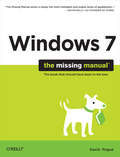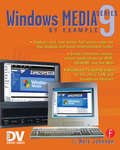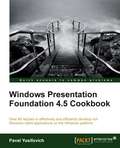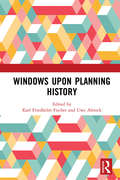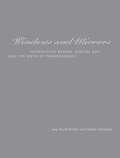- Table View
- List View
Wilton (Images of America)
by Tamara N. HokeWilton was incorporated in 1803, when it was a mostly self-sufficient agricultural community. Manufacturing was the backbone of town even before it was fully incorporated and would continue to be until the late 20th century. Early industrial success can be attributed to Wilson Stream, which provided waterpower for Wilton's mills. The names of Bass, Butterfield, Furnel, Walker, Robbins, and Goodspeed would become well known in Wilton as early entrepreneurs. George Henry Bass entered the shoe manufacturing business in 1876 and started his first shoe shop in 1879. G.H. Bass & Co. went on to become a major employer in the area and a nationally known company. The early 1900s was a time of great progress for the town in which the Wilton Academy was accredited, the town library was acquired, and the Wilton Woolen Mill was established. Several businesses also emerged on Main Street, including the Cony Miller Grocery Store, Mrs. Magrath's Millinery, Holman's Drug Store, and Stockford's Drug Store. Today, the essence of Wilton is still reflected in its official motto, "A great place to live, work & play."
Wilton, Temple, and Lyndeborough (Images of America)
by Priscilla A. Weston Michael G. Dell’orto Jessie SalisburyWilton, Temple, and Lyndeborough brings to life the rich shared history of three towns on the eastern edge of the Monadnock region. In more than two hundred photographs from the period 1860 to 1960, this book captures the proud heritage of farm and family life, glass factories, woodenware and textile mills, and the captivating scenic beauty that drew many notable artists such as Chauncey Ryder, Roy Brown, Ross Turner, and Stanley Hallett.
Win or Die: Leadership Secrets from Game of Thrones
by Bruce Craven“When it comes to the most-anticipated business books of 2019, Win or Die: Leadership Secrets From Game of Thrones is the one to beat.”—Inc.A guide to leading without losing your head, inspired by the bestselling books and smash television series Game of Thrones. "When you play the game of thrones, you win or you die. There is no middle ground." —Cersei LannisterOne of the great joys of Game of Thrones is strategizing what bold moves you'd make in this bloody, volatile world—from the comfort of your living room. And one of the great terrors of being a leader is knowing your real world can be just as brutal—and offices bring no comfort.Every day you're presented with opportunities and challenges, and must decide which roads to follow, which risks to confront, when to deny an opportunity and when to pursue the call to adventure. And you won't know whether you'll profit or fail while you're in the thick of it. In Win or Die: Leadership Secrets from Game of Thrones, Bruce Craven brilliantly analyzes the journeys of the best and worst leaders in Westeros, so that leaders can create their own narratives of success.Craven considers beloved characters such as Ned Stark, Jon Snow, Daenerys Targaryen, and Tyrion Lannister as they make terrible decisions and fatal mistakes, but also achieve incredible victories and surprising successes, learning and growing along their (often bloody) ways. Readers will learn how to face conflict and build resilience, develop contextual and emotional intelligence, develop their vision, and more.This entertaining and accessible guide will show readers how to turn danger into opportunity, even when dragons threaten.
Winchester Lever-Action Rifles
by Martin Pegler Mark StaceyWinchester Lever-Action repeating rifles are an integral part of the folklore of the American West. Introduced shortly after the American Civil War, the very first Winchester, the M1866, would go on to see military service as far afield as Bulgaria, but it was in the hands of civilians that it would become known as 'The gun that won the west.' Offering a lethal combination of portability, ruggedness and ammunition interchangeability with pistol sidearms, the Winchesters and their innovative and elegant breech-loading system represented a revolutionary design. They were used by a staggering variety of military and civilian groups - gold-miners, trappers, hunters, farmers, lawmen, professional gunmen and Native Americans. It equipped a whole generation of settlers and as such left an imprint on American culture that continues to resonate today. This book explores the Winchesters' unique place in the history of firearms, revealing the technical secrets of their success with a full array of color artwork, period illustrations and close-up photographs.
Winchester Mystery House: The Mansion Designed by Spirits
by Cynthia AndersonLearn all about the Winchester Mystery House and Sara Winchester, its creator.
Winchester Pocket Guide
by Ned SchwingThe Complete Portable Reference for Winchester Collectors More than 50 classic Winchester rifles and shotguns are featured in this comprehensive - yet easy to carry - identification and price guide. The Winchester Pocket Guide features serial numbers, descriptions of models and variations, and photographs. Identification tables offer side-by-side comparisons of 16 different features of commonly encountered models. Armed with this new reference guide, you can buy and sell classic Winchesters with confidence.
Winchester Repeating Arms Company
by Herb HouzeAlthough the name Winchester is known worldwide and is still used generically for its rifles and shotguns, a comprehensive history of the company has never been published. Herbert G. Houze, the former curator of the Winchester Arms Museum, has written a complete account of the Winchester Repeating Arms Company's development from the founding of its predecessor, the New Haven Arms Company in 1856, to the sale of the firm by Olin Corporation in 1981. Using corporate records and other sources that have come to light during the last decade, Houze reconstructs many aspects of the Winchester Company's history unknown to previous researchers. As a result, a new and far more complete picture of the firm's complex development is presented. Many commonly held beliefs about Winchester's growth and operations, such as the orderly corporate succession from the New Haven Arms Company to the Winchester Repeating Arms Company or the reasons for its financial collapse in 1930, are dispelled. In addition, seven new models of Winchester firearms are identified and fully described. Houze also sheds new light on the development of more familiar models and the men who designed them. The entire spectrum of the Winchester Repeating Arms Company's history, its successes, as well as its failures, is presented here for the first time.
Winckelmann's Images from the Ancient World: Greek, Roman, Etruscan and Egyptian
by Stanley Appelbaum Johann Joachim WinckelmannCompiled by the father of modern art history, this landmark 1767 publication boasts more than 200 outstanding engravings of ancient monuments. Johann Joachim Winckelmann, an eighteenth-century scholar who devoted his life to the study of ancient art, was the first to outline the distinctions between works of Egyptian, Etruscan, Roman, and Greek origin. Drawing upon his encyclopedic knowledge of ancient literature, Winckelmann explained the origins and significance of each of these previously unknown and unpublished images from historic buildings and monuments. These finely engraved illustrations of figures from ancient religion and mythology offer a compelling study, particularly in the light of the details imparted by the German scholar's commentary. In addition to reproductions of all the images from the original volume, this edition includes newly translated text and captions and an Introduction that relates fascinating details concerning the author's life. This is the first English-language version of Winckelmann's classic, presenting not only a panorama of captivating sights from classical civilizations but also a major contribution to the literature of art history.
Wind Bands and Cultural Identity in Japanese Schools
by David G. HebertThis well researched volume tells the story of music education in Japan and of the wind band contest organized by the All-Japan Band Association. Identified here for the first time as the world's largest musical competition, it attracts 14,000 bands and well over 500,000 competitors. The book's insightful contribution to our understanding of both music and education chronicles music learning in Japanese schools and communities. It examines the contest from a range of perspectives, including those of policy makers, adjudicators, conductors and young musicians. The book is an illuminating window on the world of Japanese wind bands, a unique hybrid tradition that comingles contemporary western idioms with traditional Japanese influences. In addition to its social history of Japanese school music programs, it shows how participation in Japanese school bands contributes to students' sense of identity, and sheds new light on the process of learning to play European orchestral instruments.
Wind Energy Exploitation in Urban Environment: Turbwind 2017 Colloquium (Green Energy And Technology)
by Lorenzo Battisti Mosè RicciThis book presents numerical and experimental research in the field of wind energy exploitation in urban environments. It comprises a selection of the best papers from the international colloquium “Research and Innovation on Wind Energy Exploitation in Urban Environment” (TUrbWind), held in Riva del Garda, Italy in June 2017. The book includes contributions from different research fields in urban wind resources, wind energy conversion systems, and urban integration, mainly focusing on the following topics: · concepts for urban and open landscape micro wind turbines, · integration of micro wind turbines in existing structures, · built-environment and high-turbulence sites’ impacts on urban wind turbines, · measuring and modeling wind resource in built environments, · rotor performance and wake features of micro wind turbines. It is a valuable resource for researchers and practitioners interested in the integration of wind energy systems and turbines in urban areas.
Wind Point Lighthouse
by Barb Wardius Ken WardiusSeveral lighthouses have called Racine home, but none is more synonymous with the nautical heritage of the "Belle City" than Wind Point. Always a beehive of activity, the Wind Point Lighthouse is one of the larger lighthouse complexes on the Great Lakes, and a hardworking keeper, two assistants, and their families made their livelihood here. For over 125 years, the tall stately tower has faithfully stood guard, shining its bright beam out over Lake Michigan nightly. Countless mariners relied on the Wind Point Lighthouse, along with a booming trademark foghorn for safe passage. Today the Wind Point Lighthouse is the most well-known symbol of Racine and is a success story among Great Lakes lights. A devoted friends group, in partnership with the Village of Wind Point, sees that the legacy and history of the Wind Point Lighthouse is preserved for future generations.
Wind Resistant Design of Bridges in Japan
by Hiroshi Tanaka Kichiro Kimura Yozo FujinoFor long-span bridges, wind action is a dominant factor in their safety and serviceability. A large number of long-span bridges have been built in Japan over the past 30 years, and tremendous amounts of research and technical development have been accomplished in wind-resistant design. This book is a compilation of the results of active research and development. Wind-resistant design standards generated in Japan are described in the first few chapters. Then comes information such as design wind speed, structural damping, wind tunnel tests, and analyses, which provide the basis of the design standards. Wind-induced vibrations and their control of girders, towers, cables, and other features are explained with examples of field measurements. Comprehensive listings of Japanese experience in vibration control are also presented. Because achieving particularly dynamic safety against wind is still not an easy task, these data and information will be valuable assets for the wind-engineering and bridge-engineering communities.
Wind Wizard
by Siobhan RobertsWith Wind Wizard, Siobhan Roberts brings us the story of Alan Davenport (1932-2009), the father of modern wind engineering, who investigated how wind navigates the obstacle course of the earth's natural and built environments--and how, when not properly heeded, wind causes buildings and bridges to teeter unduly, sway with abandon, and even collapse. In 1964, Davenport received a confidential telephone call from two engineers requesting tests on a pair of towers that promised to be the tallest in the world. His resulting wind studies on New York's World Trade Center advanced the art and science of wind engineering with one pioneering innovation after another. Establishing the first dedicated "boundary layer" wind tunnel laboratory for civil engineering structures, Davenport enabled the study of the atmospheric region from the earth's surface to three thousand feet, where the air churns with turbulent eddies, the average wind speed increasing with height. The boundary layer wind tunnel mimics these windy marbled striations in order to test models of buildings and bridges that inevitably face the wind when built. Over the years, Davenport's revolutionary lab investigated and improved the wind-worthiness of the world's greatest structures, including the Sears Tower, the John Hancock Tower, Shanghai's World Financial Center, the CN Tower, the iconic Golden Gate Bridge, the Bronx-Whitestone Bridge, the Sunshine Skyway, and the proposed crossing for the Strait of Messina, linking Sicily with mainland Italy. Chronicling Davenport's innovations by analyzing select projects, this popular-science book gives an illuminating behind-the-scenes view into the practice of wind engineering, and insight into Davenport's steadfast belief that there is neither a structure too tall nor too long, as long as it is supported by sound wind science.
Wind-Diesel and Wind Autonomous Energy Systems
by H. NacfaireProceedings of a contractors' meeting on wind demonstration projects, organized by the Commission of the European Communities, Directorate-General for Energy, held in Mykonos, Greece, 25-26 April 1988.
Windmill Bedspread
by Rita WeissYour family and friends will be blown away by this breezy bedspread. These patterns were previously published in Classic Crocheted Bedspread Designs.
Window Shopping with Helen Keller: Architecture and Disability in Modern Culture
by David SerlinA particular history of how encounters between architects and people with disabilities transformed modern culture. Window Shopping with Helen Keller recovers a series of influential moments when architects and designers engaged the embodied experiences of people with disabilities. David Serlin reveals how people with sensory and physical impairments navigated urban spaces and helped to shape modern culture. Through four case studies—the lives of Joseph Merrick (aka “The Elephant Man”) and Helen Keller, the projects of the Works Progress Administration, and the design of the Illinois Regional Library for the Blind and Physically Handicapped—Serlin offers a new history of modernity’s entanglements with disability.
Window Shopping: Cinema and the Postmodern
by Anne FriedbergDeparting from those who define postmodernism in film merely as a visual style or set of narrative conventions, Anne Friedberg develops the first sustained account of the cinema's role in postmodern culture. She explores the ways in which nineteenth-century visual experiences—photography, urban strolling, panorama and diorama entertainments—anticipate contemporary pleasures provided by cinema, video, shopping malls, and emerging "virtual reality" technologies.Comparing the visual practices of shopping, tourism, and film-viewing, Friedberg identifies the experience of "virtual" mobility through time and space as a key determinant of postmodern cultural identity. Evaluating the theories of Jameson, Lyotard, Baudrillard, and others, she adds critical insights about the role of gender and gender mobility in the configurations of consumer culture.A strikingly original work, Window Shopping challenges many of the existing assumptions about what exactly postmodern is. This book marks the emergence of a compelling new voice in the study of contemporary culture.
Windows 7: The Missing Manual (The\missing Manual Ser.)
by David PogueIn early reviews, geeks raved about Windows 7. But if you're an ordinary mortal, learning what this new system is all about will be challenging. Fear not: David Pogue's Windows 7: The Missing Manual comes to the rescue. Like its predecessors, this book illuminates its subject with reader-friendly insight, plenty of wit, and hardnosed objectivity for beginners as well as veteran PC users. Windows 7 fixes many of Vista's most painful shortcomings. It's speedier, has fewer intrusive and nagging screens, and is more compatible with peripherals. Plus, Windows 7 introduces a slew of new features, including better organization tools, easier WiFi connections and home networking setup, and even touchscreen computing for those lucky enough to own the latest hardware. With this book, you'll learn how to:Navigate the desktop, including the fast and powerful search functionTake advantage of Window's apps and gadgets, and tap into 40 free programsBreeze the Web with Internet Explorer 8, and learn the email, chat, and videoconferencing programsRecord TV and radio, display photos, play music, and record any of these to DVD using the Media CenterUse your printer, fax, laptop, tablet PC, or smartphone with Windows 7Beef up your system and back up your filesCollaborate and share documents and other files by setting up a workgroup network
Windows 8 for Tablets Plain & Simple
by Simon May<p>Your easy, colorful, SEE-HOW guide to Windows® 8 for tablets! You’ll learn the quickest ways to set up and use Windows 8 with easy-to-follow steps, screenshots, and concise, straightforward language that make learning plain and simple!</p>
Windows 8.1 Plain & Simple
by Joli Ballew Nancy MuirLearn the simplest ways to get things done with Windows 8.1 Get the full-color, visual guide that makes learning Windows 8.1 plain and simple! Follow the book's easy steps and screenshots and clear, concise language to learn the most expedient way to perform tasks and solve problems in Windows 8.1. Here's WHAT You'll Learn: Personalize your Start screen in cool new ways Use apps such as Mail, People, Calendar, Skype, and Paint Surf the web, and send and receive email and messages Explore redesigned apps for Music, Video, and Windows Store Search your files, media, and the web--all at once Access your files from the cloud with Microsoft SkyDrive Here's HOW You'll Learn It Jump in wherever you need answers Follow easy steps and screenshots to see exactly what to do Get handy tips for new techniques and shortcuts Use Try This! exercises to apply what you learn right away
Windows Media 9 Series by Example
by Nels JohnsonVideographers can harness the potential that WM9 offers to deliver high-quality video and multimedia via DVD and over the Internet. Illustrated examples and tutorials demonstrate the basic functionality of WM9 as well as the options available to advanced users who wish to design new applications with the software development kit. Professional videographers will find this book to be a practical way to learn how to set up players, encoders, and servers and how to capture and compress video so they can use WM9 with the applications they use every day, including Powerpoint, Premiere, After Effects, and Avid.
Windows Presentation Foundation 4.5 Cookbook
by Pavel YosifovichThis book is written in an easy-to-read style, with a strong emphasis on real-world, practical examples. Step-by-step explanations are provided for performing important tasks. If you are C# developer looking forward to increasing your understanding and knowledge of WPF, then this is the best guide for you. Basic experience with Visual Studio 2010 is mandatory, as well as good C# skills. Previous experience with Windows Forms is not required.
Windows Upon Planning History
by Uwe Altrock Karl Friedhelm FischerWindows Upon Planning History delves into a wide range of perspectives on urbanism from Europe, Australia and the USA to investigate the effects of changing perceptions and different ways of seeing cities and urban regions. Fischer, Altrock and a team of 13 distinguished authors examine how and why the ideologies and the processes of city making changed in modern and post-modern times. Illustrated with over 45 images, the themes addressed in the book range from the changing outlook on Berlin’s historic apartment districts and their demolition, salvation and gentrification to how planning was deployed to support dictatorship; from the shattering of myths like democracies totally departing from preceding dictatorships to the model of the post-war modern city and its fate towards the end of the twentieth century. The volume combines case studies of cities on three continents with reflections on the historiography and the state of planning history. With a foreword by Stephen V. Ward, this book will appeal to a wide readership interested in the histories of planning, architecture and cities.
Windows and Mirrors: Interaction Design, Digital Art, and the Myth of Transparency
by Jay David Bolter Diane GromalaThe relationship of digital art to innovation in the practice of design is the subject of Windows and Mirrors: Interaction Design, Digital Art, and the Myth of Transparency by Jay David Bolter and Diane Gromala. Centered on a conception of art practice that emphasizes the function of experimental forms, Gromala and Bolter postulate that digital art can directly inform the trajectory of interaction design. By shaping a discourse around issues of artistic practice, Windows and Mirrors is an analysis of the material engagement and desire to define the computer as media.
Windows on Worlds: International Collections at Indiana University (Well House Books)
by Patrick O'Meara Leah K. PeckIndiana University Bloomington houses exceptional materials from nearly every continent. Windows on Worlds: International Collections at Indiana University takes readers on a visual journey through IU's collections like never before. Ranging in works as diverse as painting, sculpture, costume, rare manuscripts, musical instruments, and much more—the museums, institutes, collections, and other holdings on IU's flagship campus provide unique engagement opportunities for students, researchers, and members of the public. Windows on Worlds showcases the unique and unexpected items from collections across the Bloomington campus, such as the Boulle clock in the Federal Room of the Indiana Memorial Union; the Burmese headdresses in the Mathers Museum of World Culture (now the IU Museum of Archaeology and Anthropology); the fish-shaped coffin in the Sidney and Lois Eskenazi Museum of Art; the rare manuscripts and puzzles of the world-famous Lilly Library; and, finally, new additions on campus like the IU Metz Carillon. Brimming with beautiful photographs, this book offers readers insight into an extraordinary number of cultures and societies through IU's collections.
